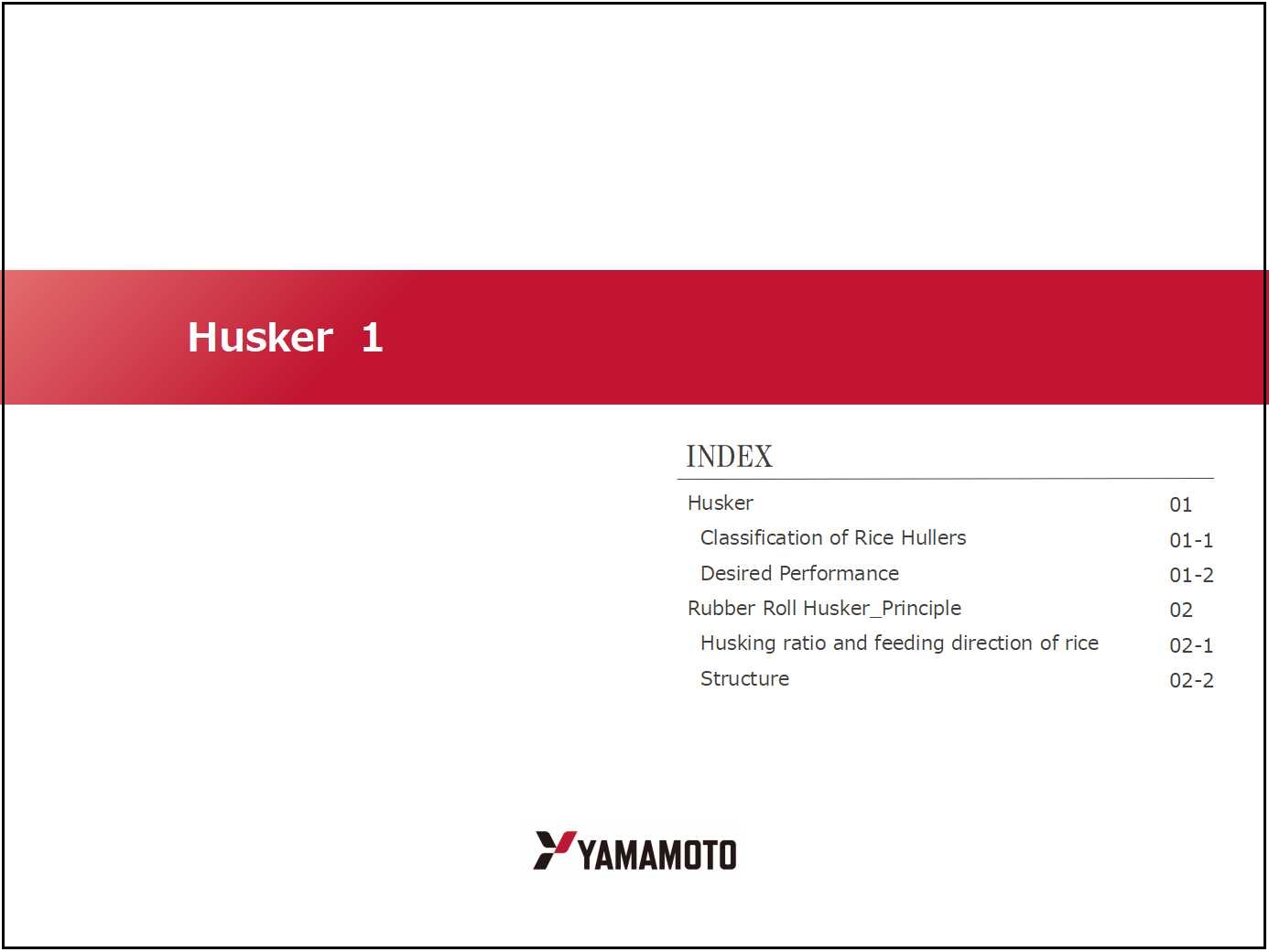38. Husker 1
-INDEX-
Husker
Classification of Rice Hullers
Desired Performance
Rubber Roll Husker_Principle
Husking ratio and feeding direction of rice
Structure
Husker
The paddy is dried and then dehulled or dehusked to obtain brown rice.
The brown rice is then polished to obtain milled rice.
In Japan, rice is generally stored in the form of brown rice. As a result, dehusking is generally performed immediately after drying the paddy. If rice is stored in the form of paddy, such as in some facilities of Japan and other countries, dehusking is generally performed immediately before rice polishing.
Dehullng is a process for peeling rice hull from the paddy. Historically, it was performed using pestle and mortar, as well as a hand mill. Dehulling is performed by the shearing stress induced by applying upward and downward force on the paddy and frictional force in opposite directions. This is the principle of the frictional huller. It has been developed as an under-runner disk sheller and a rubber roll husker. The former is scarcely seen in Japan. The latter, however, is almost exclusively used in Japan as it has an excellent ability for bulk and continuous processing.
The centrifugal husker is based on a completely different principle from that rubber husker. The paddy is rotated with the aid of radiating blades on a rotating disk, and moves due to inertial force (centrifugal force and Coriolis force). The paddy collides with the blades and peripheral surface and the hulls are broken by the impact and friction. This type of husking has excellent characteristics such as a high husking ratio and maintenance of a high husking ratio for paddy with a high moisture content.
